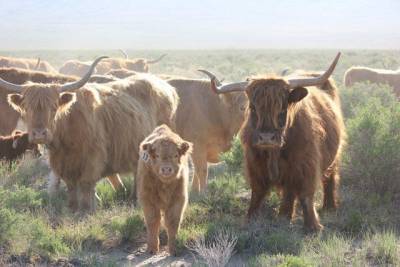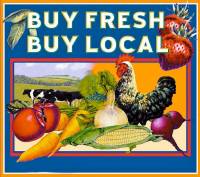
Master Category (632)
There is no easier way to garner a charitable deduction for 2013 – and support Orient Land Trust at the same time – than by simply writing a check or making a donation on-line with a credit/ debit! When renewing your membership in OLT, please consider adding on a donation to support the broader mission of OLT that includes, besides the hot springs, open space land conservation, environmental education, sustainable agriculture/ ranching practices, holistic grazing and permaculture systems, and job skills training for youth of the valley.
Benefits of a Gift of Cash
- It’s the simplest asset with which to make your donation — no appraisal or acceptance requirements as with gifts of appreciated property.
- Delivers a gift that Orient Land Trust can use immediately and is the easiest for OLT to accept.
- You receive a full charitable deduction, and apply it against a larger percentage of your taxable income than a deduction for a property gift.
There's an extra benefit:
You can claim the entire amount of your cash gift as a charitable income tax deduction up to the amount allowable by the IRS – please consult your tax advisor concerning this allowable amount.
Make sure your mail envelope, money-order, wire transfer or on-line donation is postmarked, dated or charged by the end of the year on December 31st. If it is, your gift will qualify as a 2013 gift even if it not received by OLT until the first week of 2014. The check should be made out to Orient Land Trust.
REMEMBER
Although a cash gift can provide immediate benefit to OLT, you can also use it to fund a life-income plan such as a charitable gift annuity.
Giving is as easy as 1) making a charitable gift, and 2) saving taxes. We’d like to make it even easier with this primer on some of the best ways to save – and give.
The tax laws intentionally encourage charitable giving. Because of the income tax charitable deduction, individuals who make their gifts by December 31 and itemize can significantly reduce their income taxes for 2013.
Example: If you make a charitable gift of $10,000 in 2013, you save $3,300 in taxes if you are in the 33% tax bracket. And the higher your tax bracket, the more money you save with a charitable gift.
Giving, of course, is much more than tax brackets and charitable deductions. Philanthropy provides the opportunity for you to really make a meaningful difference for the causes about which you re passionate. Orient Land Trust is here to help you fulfill your philanthropic goals.
The ways of giving listed below are only a brief introduction to some of the best tax-advantaged methods of giving. We would be pleased to provide you with further information. Also, we urge you to discuss your 2013 year-end tax planning with your accountant or other professional advisor.
Permaculture is a branch of ecological design, ecological engineering, and environmental design that develops sustainable architecture and self-maintained agricultural systems modeled from natural ecosystems.
The core tenets of permaculture are:
Care of the earth: Provision for all life systems to continue and multiply. This is the first principle, because without a healthy earth, humans cannot flourish.
Care of the people: Provision for people to access those resources necessary for their existence.
Return of Surplus: Reinvesting surpluses back into the system to provide for the first two ethics. This includes returning waste back into the system to recycle into usefulness.
Permaculture design emphasizes patterns of landscape, function, and species assemblies. It asks the question, "Where does this element go? How can it be placed for the maximum benefit of the system?" To answer this question, the central concept of permaculture is maximizing useful connections between components and synergy of the final design. The focus of permaculture, therefore, is not on each separate element, but rather on the relationships created among elements by the way they are placed together; the whole becoming greater than the sum of its parts. Permaculture design therefore seeks to minimize waste, human labor, and energy input by building systems with maximal benefits between design elements to achieve a high level of synergy. Permaculture designs evolve over time by taking into account these relationships and elements and can become extremely complex systems that produce a high density of food and materials with minimal input]
The design principles which are the conceptual foundation of permaculture were derived from the science of systems ecology and study of pre-industrial examples of sustainable land use. Permaculture draws from several disciplines including organic farming, agroforestry, integrated farming,sustainable development, and applied ecology. Permaculture has been applied most commonly to the design of housing and landscaping, integrating techniques such as agroforestry, natural building, and rainwater harvesting within the context of permaculture design principles and theory. (Wikipedia)
OLT is working with High Altitude Permaculture (www.hialtpc.org) and its students to help design optimal agriculture systems for the OLT lands. Sandy Cruz, Peter Bane and Becky Elder lead permaculture workshops to facilitate the spreading of this marvelous, natural way of working with nature to preserve our lands, provide responsible foods, and enhance our environments.
Grasses across the earth developed with large herds of prey (ibex, yaks, bison, camels, elk, moose, and, yes, the ancestors of cows, goats, sheep, etc.), and their predators – wolves, lions, hyenas, etc. Think of the Serengeti in the movies - the prey lived in large bunches, eating all plants down to a healthy level, pooping and peeing and working it all into the earth with their feet. When the predators came around, the herd moved on quickly, in a tight herd, to start the process over again elsewhere. The result was healthy plants, roots and soils.
Today we have eradicated the large herds of wild prey and most of the predators. We have divided vast grasslands into plots of a few acres (even many acres) surrounded by fences. As a result, not surprisingly, the grasses are suffering. Grasses are important. They are, on a global scale, huge carbon sequesterers (hmmm, a word?). So, it's a good thing to optimize their health to optimize our health.
And the way to do that on a large scale is to help to bring back the model of predator-prey dynamics to our grasslands. A few issues, certainly. We have the prey, in the shape of food animals. However, as we have fenced the entire world, we can't just let the proverbial wolf loose because the prey animals would not be able to flee naturally. So what to do?
Alan Savory, of The Savory Institute (savoryinstitute.com), has been working all over the world for decades to help food producers mimic the prey-predator model of grasses revival to great success and acclaim. His premise is that even though it is not realistic to bring in predators, we can use our cattle, goats, sheep to revive grasslands by stepping in and using holistic grazing management to take their place. The method is to put a lot of animals on a small area of land and move them quickly when they've eaten the grass down to a desired level and only bring them back when the grass is ready. That is done with lots of determination, work, and electric fence. The result is healthy roots, healthy soils that readily absorb and hinder evaporation of the sparse water, and healthy grasses of multiple species. This will not create immediate results. It will require hard work and dedication for years.
To that end, OLT has entered into a collaborative partnership with a local ranch, Arrowpoint Cattle Company (you might have eaten their delicious beef that we sell at OLT!), which has been using this grazing method for years. We have also joined hands with the Savory Institute, Natural Resource Conservation Service, Bureau of Land Management, and our neighbors, Richard and Linda, to bring this effective process to the Everson Ranch, Richard and Linda's lands, and OLT's BLM grazing allotments, in order to bring our grasslands back.
Arrowpoint's cattle are Scottish Highland, small, drought and harsh weather resistant beauties that are trained to a whistle and a kind word. In the last few days we've brought in nearly 40 cows and calves. And they are beauties. We'll have a total of around 120 furry beings in the project.
OLT has always had cattle on the Everson Ranch. The difference now is that we are practicing natural resource enhancement as opposed to commodities resource extraction.
So come help us celebrate our commitment to the preservation of OLT's beautiful lands and helping to build a model of sustainable agriculture so ranchers in the Northern San Luis Valley can continue to ranch and preserve our beautiful open spaces!
Trading Post
Massage Therapists
Artists
[link to policies / application]





